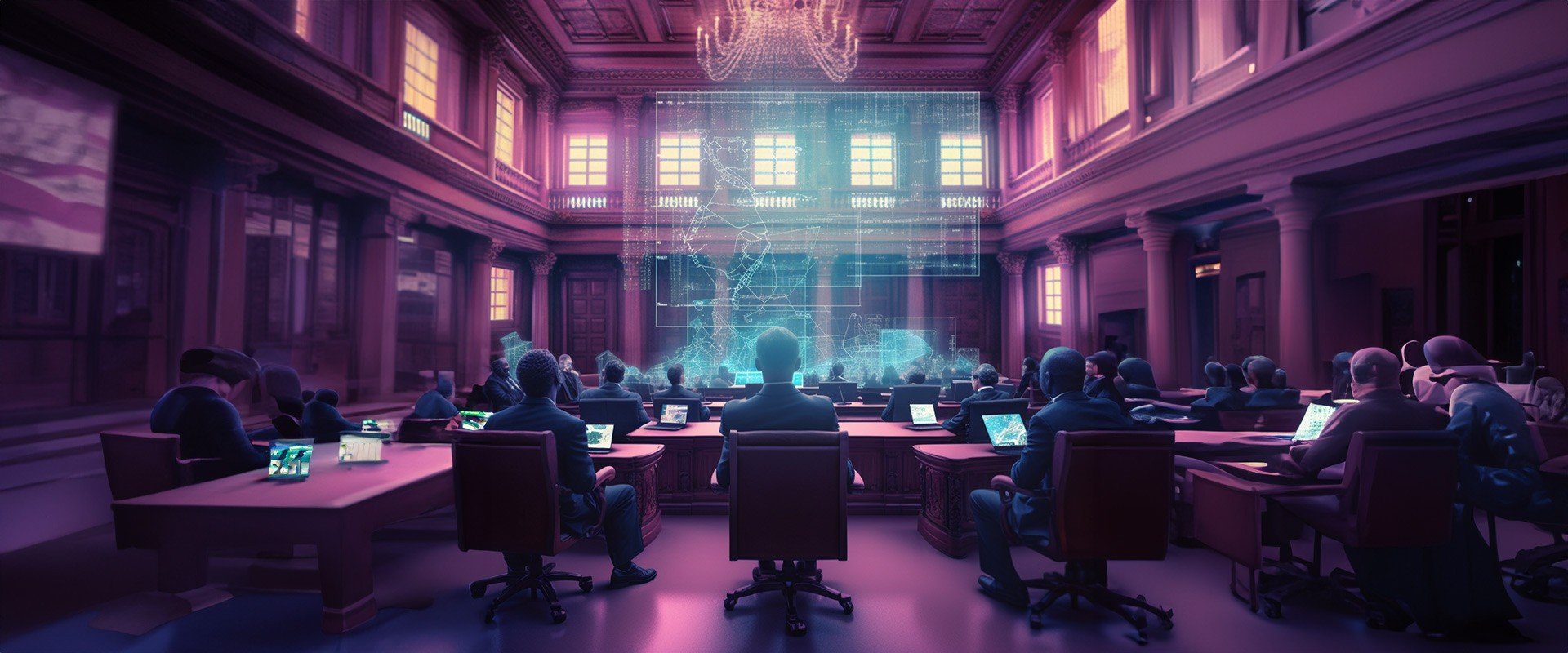Last week, we had some great dialogue with investors and leadership on role of AI in product engineering, development, and the potential for roadmap acceleration. Together with Lou DiGiacomo, VP of Product, and Pat O'Flaherty, VP of Technology, I thought we had well-intersected unifying POV to share with the world. To be "extra" - I decided to solely use AI tools to combine the sharable components of our conversations, build out 80% of this article, and assist in the production of the related artwork.
Summary:
AI holds significant potential in product development and operations strategy.
It's most effective at solving common, straightforward problems with lots of training data.
AI can streamline basic coding tasks, making coding more accessible and efficient.
AI aids in R&D initiatives, further promoting operational efficiency.
Despite AI's capabilities, human creativity, critical thinking, and nuanced understanding remain crucial for handling complex tasks.
AI contributes to innovation but does not replace the need for human insight and creativity.
"Primordial AI" by amolw.me, powered by Midjourney & Adobe Firefly
AI's Role in Product Development: Rich in Potential
The AI revolution is well underway, and it is having an indelible impact on our workspaces. One area seeing substantial progress is product development, where AI's role can be compared to the early stages of Earth's development - rich in potential, yet primordial. The highest gains in efficiency with AI are usually witnessed when solving common and relatively straightforward problems. This is especially true for challenges that have already been tackled by someone else, with a wealth of training data for language models to draw from, such as sales coaching or assistance.
The Formula 1 Analogy: AI's Evolution in Product Improvement
Drawing parallels with Formula 1 car development, once a product is past prototype and in the market, it is continuously evolving and improving. AI is capable of constructing a sturdy chassis and engine and understands basic aerodynamics, forming the groundwork for a highway-ready sedan. However, when it comes to fostering innovation, fine-tuning, and high-performance demands, there's a need for more human involvement. This is where fullthrottle.ai is in the product maturity lifecycle. The critical thinking and nuanced understanding of humans come into play, especially when addressing problems not previously solved.
Democratized Coding: AI in Operations and Strategy
AI also shows significant promise in operations and strategy, especially in enabling "democratized coding" beyond traditional engineering teams. For instance, coding assistants such as BARD and ChatGPT have shown proficiency in handling basic, well-defined, and repetitive coding tasks. Being able to copy & paste an error message from a code interpreter and get specific assistance can save an immense amount of time. AI has also been helpful in several R&D initiatives involving web crawlers, map tools, and CSV manipulation, semantic language processing, helping users to "find the right words." and resultant task creation.
The Boundaries of AI: The Need for Human Attributes
However, it is essential to appreciate the boundaries of AI. Software development is not solely about technical skills. It also involves understanding the relevant business and its model, the challenges being addressed, and collaborative communication with domain experts. These factors highlight the need for problem-solving skills, critical thinking, creativity, and innovation - attributes still uniquely human.
The AI Narrative: Evolutionary Rather than Revolutionary Impact
The narrative around AI, and tech "game changers" in general, tend to follow a similar pattern. The initial hype gradually subsides as businesses identify the technology's true value and incorporate it into their operations and platforms. Consequently, the impact of AI tends to be evolutionary rather than revolutionary.
"Putting Code on Trial" by amolw.me, powered by Midjourney & Adobe Firefly
The Intellectual Property Debate: Who Owns AI-Generated Code?
In the digital age, where AI's abilities are advancing at an unprecedented rate, one area of contention likely to attract attention for years to come is the question of Intellectual Property (IP) - specifically, who owns the IP of the code that an AI coder generates? This conundrum arises from the nature of AI training models, which are built on data generated by a multitude of individuals. This, therefore, complicates the concept of ownership and raises complex legal and ethical issues.
Firstly, there's the issue of the originality and ownership of the code produced by AI. It begs the question: if an AI tool generates code based on the training it has received from multiple sources, who can rightfully claim ownership of the final product? Furthermore, AI's ability to independently produce solutions from learned information adds another layer of complexity. If a solution is completely novel, can the AI be considered the creator? And if so, who holds the rights to this creation - the AI's programmer, the user, or the AI itself?
Finally, as AI continues to evolve and potentially generate even more unique and valuable outputs, the current legal and IP frameworks might need to be revisited. A detailed, proactive discussion is necessary among lawmakers, technologists, and corporations to formulate a policy framework that recognizes the capabilities of AI while fairly and adequately protecting the interests of all stakeholders involved in the creation and use of AI. Complicated policy takes years to build consensus, especially given the current political climate.
The Future of AI: Balancing Human Creativity and AI Assistance
In conclusion, AI coders are exceptional for repetitive, low-complexity tasks, saving us significant time and freeing developers to engage in more valuable work. Engineers want to work on complex tasks, not mundane ones so it fosters a learning and challenging culture allowing richer professional growth. In a complex service-based environment, the impact of AI coders is positive but evolutionary over the next 3-5 years, suggesting a balanced blend of human creativity and AI assistance is essential for a sustainable and innovative future.


